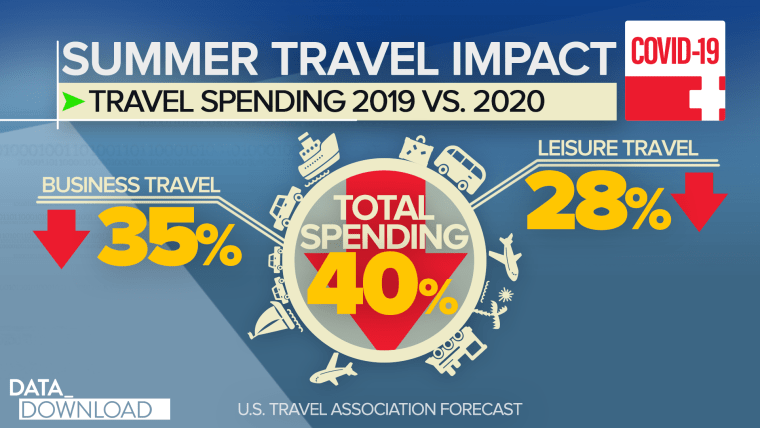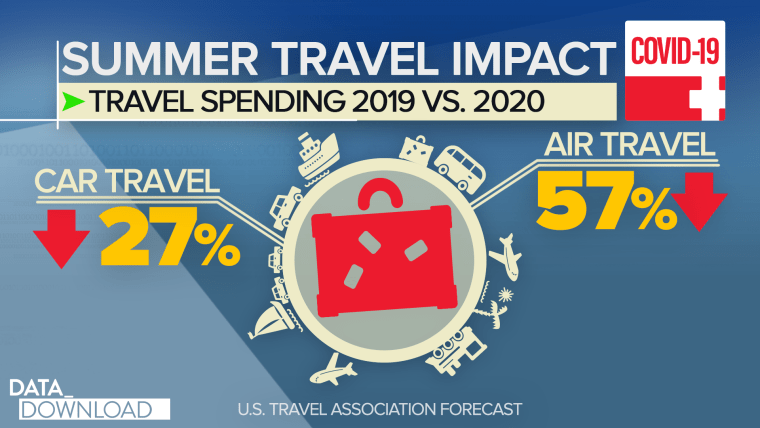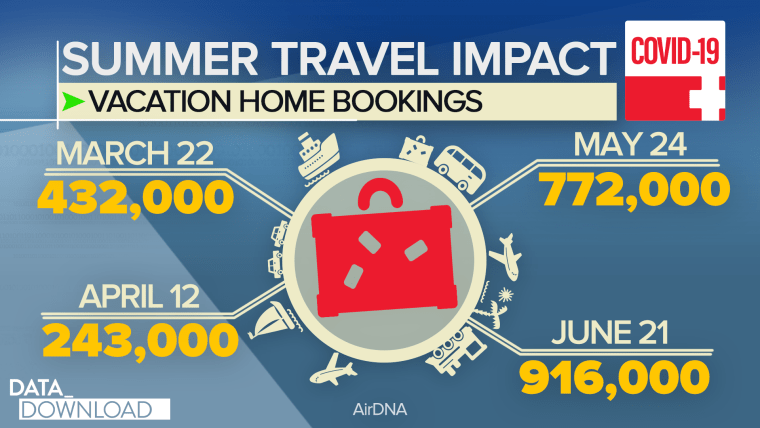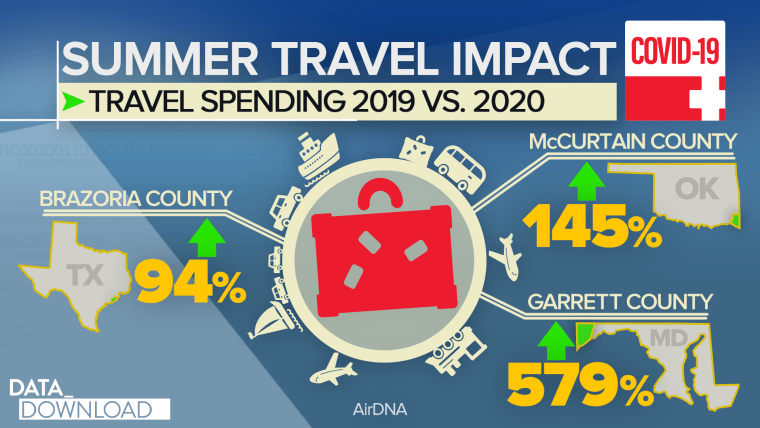WASHINGTON — The summer of 2020 turns out to be the summer of COVID-19 and as vacation time begins in earnest that is likely to have some serious economic and health impacts on the tourism industry.
Will people go? Where will they go? How will they go? Those are multi-million dollar questions and how people answer them will have real impacts in communities around the country.
Going into the summer the numbers did not look great for the travel industry. A U.S. Travel Association forecast for the industry released in mid-June was grim.

The association forecasted that total spending would be down some 40 percent in 2020 as compared to 2019. And that drop wasn’t just because of less travel; the average spending per trip was forecasted to be down as well, by almost 15 percent.
That means that even when people do travel, they won’t be traveling and spending the same way. There are probably a few reasons for that, such as less air travel and perhaps less eating out when people are on the road, lowering chances for exposure to the virus.
The numbers also showed how the loss was about more than a dip in business travel. The forecasted declines weren’t just associated with fewer trips for meetings or sales calls.

Business travel looks set to drop by more than one-third, but leisure travel is not far behind in the figures, with a decrease of close to 30 percent in the forecast.
The number of trips by airplane, a big part of the life of the business traveler, is indeed set to fall sharply — by more 50 percent in the Travel Association forecast. But car trips, those frequent staple of the family summer vacation, are also predicted to decline by about 27 percent.

That is a lot of negative numbers for an industry that is hurting in the pandemic, and that means a lot of lost jobs and lower wages for people who work for airlines, hotels and rental car companies, as well as people employed by the tourist attractions people tend to visit in the summer months.
One analysis has predicted that Disney's global theme park attendance will decline by a total of 148 million visitors in fiscal years 2020 and 2021.
But the data suggest there may be one winner in the summer of COVID: short-term summer rental properties, including houses and cottages available through platforms such as Airbnb and VRBO.
Data from AirDNA, a firm that tracks more than 10 million rental listings around the world, finds that the last few weeks have seen a sharp rise in the number of properties being rented in the United States.

New bookings at the properties took a dip as the coronavirus became big news in March, bottoming out at about 243,000 new bookings the week of April 6–12. But the numbers have risen fairly steadily since then, rising to more than 900,000 per week in mid-June.
The figures suggest people, faced with the realities of COVID and of limited hotel capacity, are finding other ways to get away.
And inside those overall numbers some places in particular are seeing big changes in the number of bookings this July 4 weekend as compared to last year. Counties in more rural locales scattered outside metro areas around the country are seeing big jumps in bookings this year.

Garrett County, Maryland, is at the end of that state’s panhandle, fairly close to both Pittsburgh and Washington, and is home to Deep Creek Lake boating and fishing. McCurtain, Oklahoma, is rural and remote with a fish and game reserve and a location between Dallas, Oklahoma City, Little Rock, Arkansas and Shreveport, Louisiana.
Pacific County, Washington, sits between Seattle and Portland, Oregon, on the Washington coast with more than 1,200 miles of shoreline and only about 22,000 people. Bayfield County, Wisconsin, sits on the northern edge of the on Lake Superior, three-plus hours from the Twin Cities. And Navajo County, Arizona, is remote rustic territory on the edge of the Petrified Forest National Park, close to Phoenix and Albuquerque.
Those are not urban getaways for sight-seeing and shopping. They are mostly sparsely populated places where getting away from crowds is a big goal. Those communities and others like them will be good to watch this summer for a few reasons.
First, there’s likely to be good news for those local economies for the coming weeks. In those communities, the stores and restaurants are likely to be a bit busier this year and the roads a bit more crowded. They seem primed to stave off the worst effects of the COVID travel slowdown.
But the price of bringing in a lot of travelers is potentially bringing in a lot of coronavirus cases into those same communities. In the weeks ahead, the virus case counts in these counties will reveal what other impacts may come with the nation’s new 2020 vacation plans.